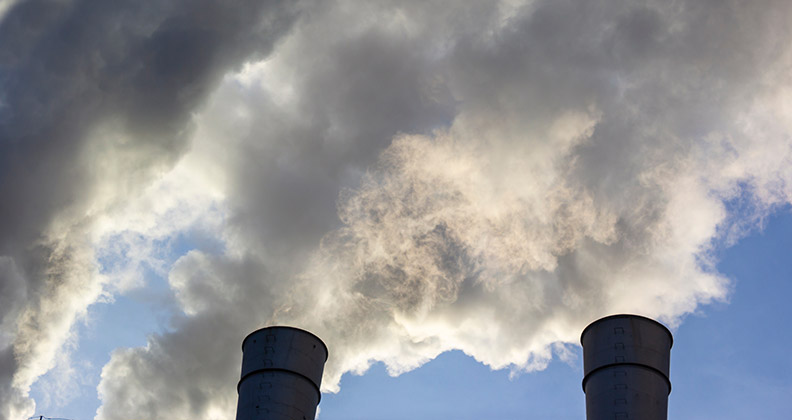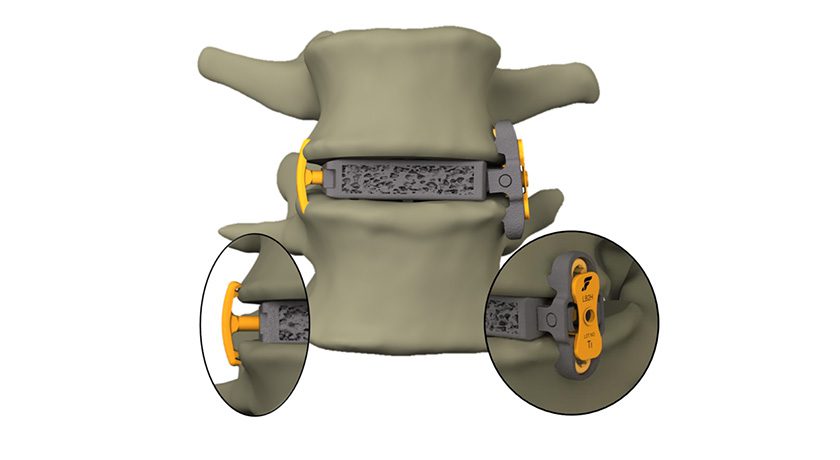
Disruption in the medical device industry is inevitable, according to Bill Tribe, Partner at global consulting firm A.T. Kearney. In preparation for a research paper, titled “Medical Devices: Equipped for the Future,” Tribe and his team interviewed more than 30 global industry executives from 20 of the world’s leading device manufacturers, identifying five disruptive factors influencing the orthopaedic device market: a power shift to payors and providers, heightened regulatory scrutiny, unclear sources of innovation, new healthcare delivery models and a need to serve lower socio-economic classes.
To offset a shifting economic and regulatory environment, Tribe and his team foresee the need for companies to abandon traditional business models and begin to develop and implement distinctive, proprietary models. Those will be based off the interplay of every facet of an organization, from executives to engineers to sales staff to supply chain managers. Several large players have already begun to adopt such models. DePuy Synthes’ parent company, Johnson & Johnson, recently restructured its business and Stryker has made major investments in additive manufacturing as it seeks to differentiate its products.
Stryker Chairman and CEO Kevin Lobo noted, “Over time, I expect robotics and 3D printing to take on a more important portion of our overall sales, and they will be sustainable and sticky if we have something that the competition doesn’t have.”
Tribe will discuss the importance of incorporating new strategies and overcoming disruptors during his keynote speech at OMTEC 2016.
BONEZONE: How can businesses develop a proprietary business model?
Tribe: Get a clear picture of what is driving margin performance across product ranges and take that right down to the different hospital systems, combinations of products in hospitals, performance of the distribution function on a geographic basis, a state-by-state basis. You need to know what’s driving margins and overall performance, whether that be service or cost, and you need a clear notion of where you can compete. Our experience is that companies have general understanding of that, but lack the understanding on a detailed level.
Once that detailed understanding is in hand, it’s easier to overlay that with industry trends and specific disruptive forces that will influence the sector. Once you have that mapping done, you can ask, Where can I compete more effectively? What can I augment and enhance, while taking out anything that is unnecessary?
Mapping the detailed performance advantages of specific companies is the basis to figure out where you want to compete. Ultimately, how are these companies going to justify making premium margins in the future? How are they going to make the case that they should be the ones who deserve to charge the attractive margins they typically have?
BONEZONE: How should executive teams determine which disrupting factors will impact their business the most, or most immediately?
Tribe: Unlike other medical device sectors, all of the five disruptive forces are impacting orthopaedics and are doing it in such a way that they’re reinforcing each other. Possibly the only exception to that is the rise of very extreme regulatory frameworks and compliance frameworks, i.e., FDA. The reason I think that may not be the biggest issue for orthopaedics is that the sector was one of the early focuses (for FDA). There was some published information around the sector that really drove a focus on compliance and product safety ahead of time.
The four other disruptive forces are all acute and all reinforce each other. For example, we can look at the Affordable Care Act (ACA) in America. The ACA created some challenges, but one of its purposes was to support a new market and broaden insurance coverage. That broader market will demand cost-effectiveness. That’s a principle in this. You’re going to need “good enough” and cost-effective products. Then you have the Centers for Medicare & Medicaid Services (CMS) driving new payment schemes associated with that. Bundled payments are a good example.
Let’s think about the innovation pipeline, too. There is still innovation in this sector, but from a product innovation standpoint, a lot of the core platforms already exist. Much of what’s being looked at are new materials and new material usage within implants for longer life of the implant. Some of these devices are extremely expensive, so you’re working in the context of a system that is under increasing cost pressure, even for access of new markets.
If you have any intention of looking at these new products, you must show the effectiveness of that product over the lifecycle of the implant—not just the lifecycle of the episode within the bundled payment scheme; that’s a major challenge. So, all of the factors come into play.
BONEZONE: Is that convergence of disruptive factors unique to orthopaedics?
Tribe: Multiple sectors are seeing the same influence. Orthopaedics happens to be at the sharp end.
An orthopaedic implant is part of a truly extended value chain of a procedure. You have an issue, you have a procedure done. The implant, the equipment itself, only represents about three percent of the total cost of the surgery. But among that three percent, the companies that make the implants make very attractive margins. They certainly make margins that are much more attractive than many of the value chain players across the spectrum of this value chain (from the hospitals right through to the raw material providers). You have a concentration of margin in a relatively small component of the value chain. That chain itself is very expensive to healthcare systems and is interconnected, so that if you want to reduce costs, it’s a combination of the individual cost-owners and also the way that they interplay with each other. That, of course, makes it very attractive from the view of things like bundled payment schemes.
I think that the fact that it is both visible and part of a broad value chain of a procedure is part of the reason that orthopaedics tends to be impacted by many of these disruptive forces at the same time.
In some other markets, more new innovation is taking place. The core cost of the product is much lower in other sectors, meaning that they’re less under the scrutiny of the GPOs and care providers. It’s sector-specific.
BONEZONE: How could merger and acquisition activity impact these plans? Should M&A activity be built in?
Tribe: You’re already seeing increasing numbers of orthopaedic surgeries taking place in the top 100 healthcare systems, and that’s being driven by the consolidation of the hospitals. You’re going to see more orthopaedic surgeons employed by large groups, as opposed to being truly independent. The majority of new surgeons are joining increasingly large and increasingly consolidated hospital groupings, which have increasingly powerful General Purchasing Organizations. Some of those big groupings have made the explicit decision to not have orthopaedic sales representatives come into their environment.
As you see that continue, how many hospital groupings are going to go down the same path and try to restrict the power and the influence of the orthopaedic device makers? Hospitals are going to become increasingly powerful from a purchasing point of view, and as you move into a bundled payment scheme, that’s going to apply to the hospital groupings that control the overall value chain.
All of these things are going to increase the risk that the implant itself is going to become a commoditized product. Commoditized products do not sit easily with the types of margins that these companies typically make. That rising power in the hospital base is crucial. It’s a significant risk.
You’re also seeing consolidation of the insurers. Last year, 14 states had one insurer that had at least a 50 percent market share. The restriction on price being driven through the payor channel is also being impacted by M&A activity. I’d go even further than that. When we originally wrote the paper, we predicted that there would be more, large-scale M&A among the device manufacturers themselves as a response to the lack of innovation and the cost-challenges related to the business. I think it’s very likely that we’ll see more M&A activity across the value chain; that’s going to impact the way people do business and impact from the payor/provider side the ability of companies to justify premium margins and to avoid commoditization of products.
BONEZONE: What are some common pitfalls in creating proprietary plans?
Tribe: You have to think that the businesses of the future will have a sensitive interplay among the top line of the business, cost-structure, the deployment of inventory, commercial logistics, quality and regulatory framework, R&D, innovation and analytics. The response to this will be very cross-functional in its nature.
A risk would be: Not to accept that development and failing to develop these strategies. You have to get all of the cross-functional players involved and help them understand why and what they have to provide and why and what they have to change. It won’t be just one function.
There’s a risk to incrementally moving from your operating model of today to the operating model of the future. A number of the conversations we’ve had with folks tended to focus on the mindset of gradual change as the market changes.
The issue is that the industry is at a tipping point. It’s going to change quite quickly–it already is. In fact, even while we’ve been doing this study and making projections, the margin across the general medical device sector and in orthopaedics saw more of a reduction last year than we and others had forecast. It’s changing quickly. So, the option to incrementally change to follow the market may not be the best one. The one thing you don’t want to do when disruption forces your hand is find that you’re behind. You need to be ahead of it.
The other point goes back to this being a broad value chain. The implants are just a small part of that. So, another risk is becoming too inwardly focused. You may focus on one specific portion of the value chain and profit from that, but it’s important to see where that fits into the broader ecosystem of the orthopaedic value chain and understand what the disruptive forces are doing to other parts of the chain, because it will impact the business.
BONEZONE: How long do these plans take to develop and implement? When should companies start?
Tribe: Start soon and plan for it to take a while. You’re certainly going to see the changes that need to happen taking place over the lifespan of a strategic plan, three to five years.
Let’s look at examples from other sectors, namely Medtronic and Cardinal Health. Both have made deliberate changes to how and where they compete, with the strategy of broadening their offerings and playing across the value chain of medical devices and life sciences. Those examples have been taking place over multiple years and are still taking place.
Some of the things these companies choose to change can be done relatively quickly. For example, you can go acquire a service company or a robotics company. You immediately bring those capabilities onboard. Obviously, you have to integrate, but you can make those changes very quickly.
Others are going to take much longer. For example, some companies are thinking about the role of analytics and data in monitoring device performance in the overall value chain. If you want to build an analytics function and the IT systems that go with that, it’s a multi-year investment and implementation decision in terms of building the capabilities, procuring and implementing the system and then watching how it works with the wider business.
BONEZONE: Have companies begun to adopt these proprietary business models?
Tribe: Some of the leading ones are deliberately moving towards mechanisms to offset these disruptive challenges. For example, a number of the big companies are looking at or have acquired hospital systems, hospital service providers. Several of them have looked at acquiring robotics as part of their platform perspective. Some are going down the route to truly personalized implant systems. Others are looking at training to help surgeons move to outpatient settings, as opposed to just being in-theater.
A lot of examples show specific moves with the intent to ensure that these companies continue to be present and important for the hospital system, even as the implant itself becomes—not commoditized, but more and more the preserve of the GPO and buying power of the payor. These moves are also meant to offset commoditization and make the company important in the buying choice, and also to justify the margins that are made on the efficacy of the product and how it’s used. You see a lot of examples of companies broadening from the core product range and expanding into the service and support strategy of the value chain.
Some of these plans directly take on certain of the disruptive factors we’ve been talking about.
The issue behind that is that some of these developments are occurring pretty early, so whether they work or don’t work is yet to be seen. Certainly, what’s less clear from the outside looking in is, how much some of these are driven by a truly overarching multi-year strategy and the adoption of changes to the business model. I think that some of the leaders are doing those things. Some of the other companies are still in the investigative as opposed to a fundamental mode.
Questions on this article? Reach out to Julie Vetalice by email.




